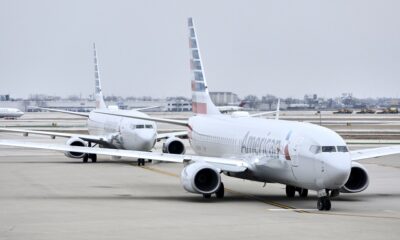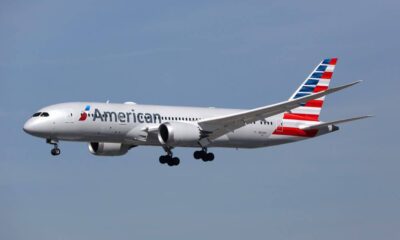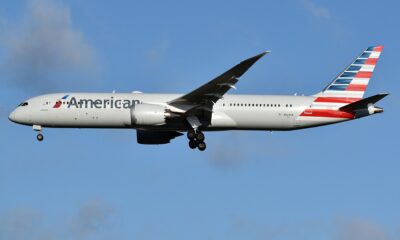Airlines
Air Transport World Names American Airlines 2023 Eco-Airline of the Year
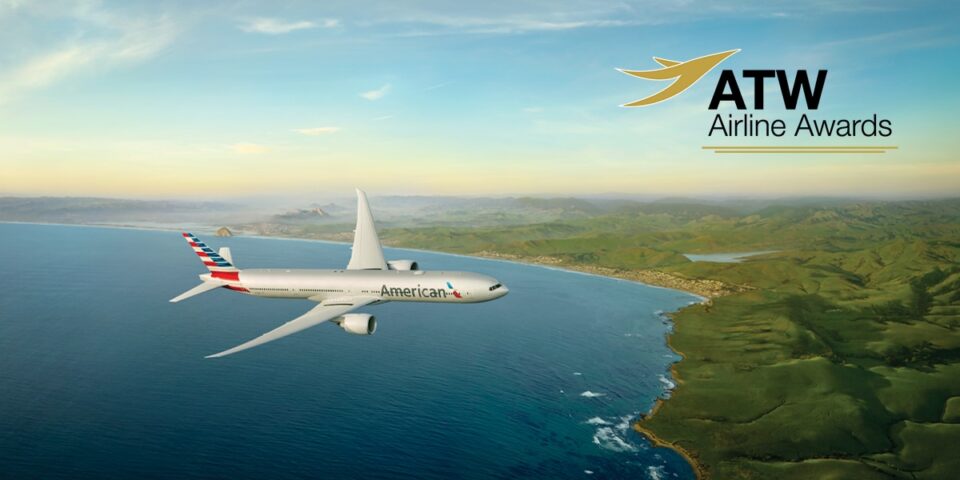
American Airlines has been selected the 2023 Eco-Airline of the Year, according to Air Transport World (ATW), the premier media company serving the information needs of the international airline and commercial air transport sectors.
The award marks the latest recognition of America’s progress towards its ambitious sustainability goals. With the airline’s most extensive fleet renewal effort in industry history and substantial investments in fuel of the future, ATW highly regarded Americans’ work to run a more fuel-efficient operation with more fuel-efficient aircraft powered increasingly by low-carbon fuel and new technology.
American airlines Insight view of A321XLR(Opens in a new browser tab)
Fuel efficiency is maximized by a new application called smart gating, which optimizes gate assignments at congested airports. Smart gating is currently in use at Dallas Fort Worth International Airport, Charlotte Douglas International Airport and Miami International Airport and saves an estimated 1.4 million gallons of fuel and 13,500 metric tons of carbon dioxide annually.
Ongoing fleet renewal efforts have also helped the airline improve fuel efficiency by more than 10% since 2013, which has helped save 1.9 billion gallons of fuel and prevented 19 million metric tons of carbon dioxide. Today, half of American’s U.S. mainline fleet is less than 10 years old.
Emirates flew B777 test flight with 100% SAF(Opens in a new browser tab)
Leading the industry in sustainable aviation fuel (SAF) consumption, the world’s largest airline used 2 million gallons of SAF in 2022 and doubled its usage year over year. SAF agreements with Gevo, Inc., Neste and Aemetis bring the airline’s total low-carbon fuel commitments to more than 620 million gallons. American is also the first U.S. airline to make two direct investments focused on the development of both hydrogen-electric propulsion technology and the future of hydrogen distribution logistics.
American was the first airline in the world to receive validation from the Science Based Targets initiative (SBTi) for its intermediate carbon emissions reduction goal. American’s science-based target is to reduce its carbon intensity by 45% by 2035, compared to a 2019 baseline.

Airlines
China to Design second Phase of C919 Aircraft; Cathay Pacific Shows Interest
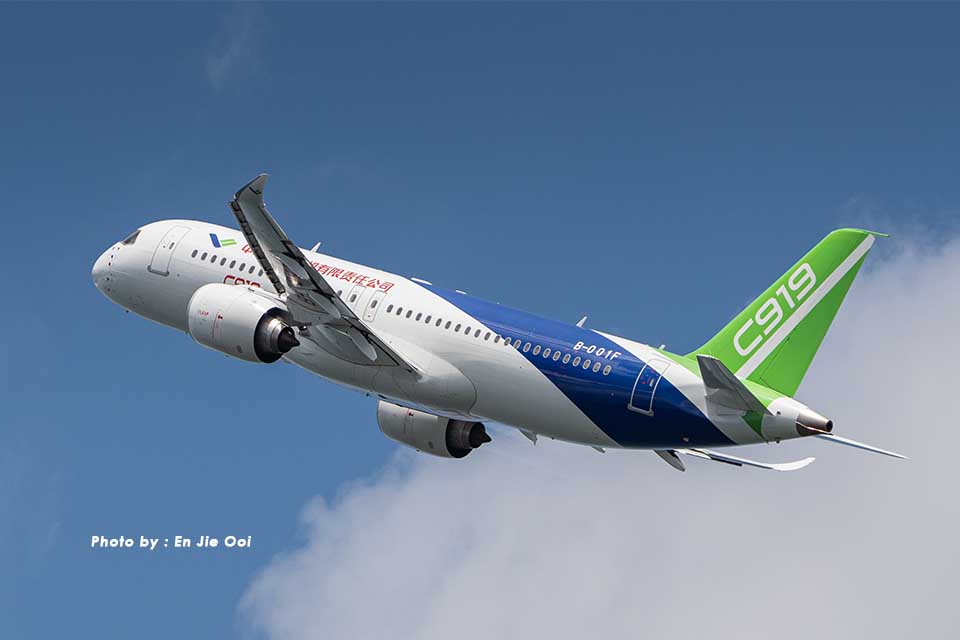
In a significant move reflecting China’s growing ambitions in the aviation industry, the state-owned Commercial Aircraft Corporation of China (COMAC) is set to expand its production facilities for the indigenous C919 jets in Shanghai.
This expansion comes in response to a surge in orders, signaling a significant milestone for China’s efforts to establish itself as a key player in the global aerospace market. According to reports from the China Aviation Planning and Design Institute (AVIC-CAPDI), a key contractor involved in the project.
COMAC has embarked on the second phase of the C919 large passenger aircraft batch production capacity construction project. The project, located in Pudong, Shanghai, boasts a substantial total construction area of 330,000 square meters.
The expansion project, as outlined by AVIC-CAPDI, primarily focuses on the construction of crucial infrastructure including an assembly plant, parts warehouse, and tarmac area. Such developments underscore COMAC’s commitment to ramping up manufacturing capabilities to meet the burgeoning demand for the C919 aircraft.
This move comes on the heels of major orders from leading Chinese carriers, including Air China and China Southern Airlines, each placing orders for 100 C919 jets. These substantial orders not only validate the growing confidence but also aim to challenge the dominance of industry giants Airbus and Boeing in the commercial aircraft market.
Despite primarily securing orders from Chinese airlines and aircraft lessors, the C919 has garnered significant traction, accumulating over 1,000 orders to date. Moreover, at the recent Fortune Innovation Forum held in Hong Kong, Ronald Lam, CEO of Cathay Pacific, hinted at the airline’s potential interest in adopting the C919 in the near future.
Airlines
Mid-Flight Chaos: Eva Air Flight Attendants Praised for Halting Brawl Over Seat Dispute
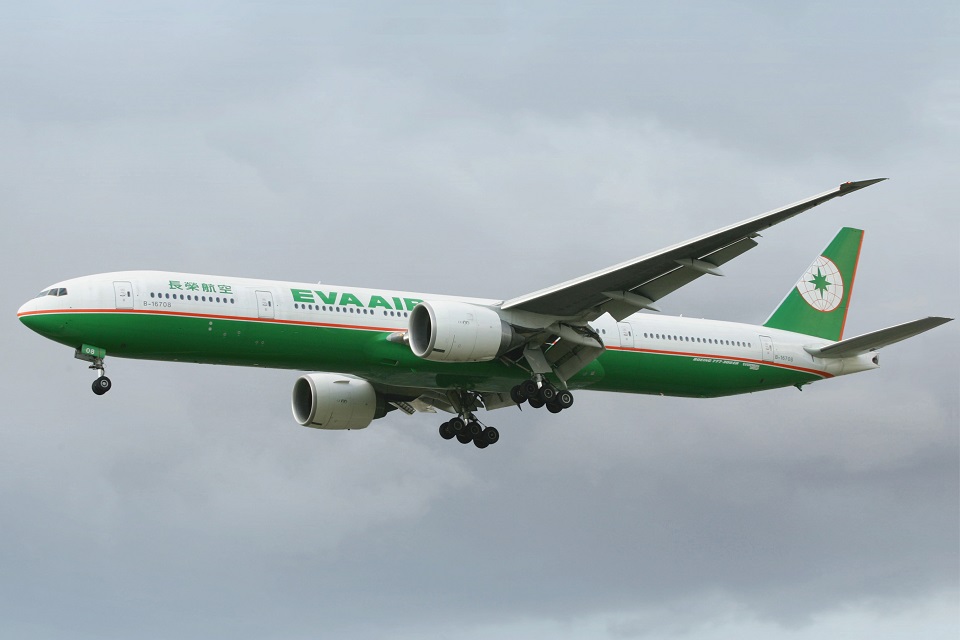
In a remarkable display of bravery and quick thinking, three female flight attendants from Eva Air have been lauded as heroes after diffusing a tense altercation between two male passengers aboard a flight from Taiwan to San Francisco.
The incident unfolded onboard EVA Air flight BR8 on May 7, just hours into the 11½-hour journey from Taiwan Taoyuan International Airport to San Francisco International Airport.
Reports suggest that the confrontation erupted over a seat dispute when one passenger sought to switch seats due to concerns over a neighbor’s coughing. In the ensuing chaos, the passenger who attempted to claim the seat was met with resistance from its original occupant, leading to a physical altercation.
Witnesses on the flight described a scene of escalating tension as one passenger attempted to strike the other, prompting the swift intervention of the cabin crew. Video footage shared on social media captured the moment when the flight attendants courageously stepped in to separate the brawling passengers, with one attendant holding back the assailant while others intervened to prevent further escalation.
Passenger Alex Pierce, who captured the incident on video, expressed his concern for the safety of the flight attendants amidst the chaos. Despite the volatile situation, the Eva Air crew remained composed and acted decisively to restore order on the aircraft.
Following the intervention of the flight attendants, the two unruly passengers were handed over to US law enforcement upon the flight’s arrival in California. Eva Air reiterated its zero-tolerance policy towards disruptive behavior and commended the crew for their exemplary response to the incident.
Airlines
Why do airplane tires cause smoke at touchdown?
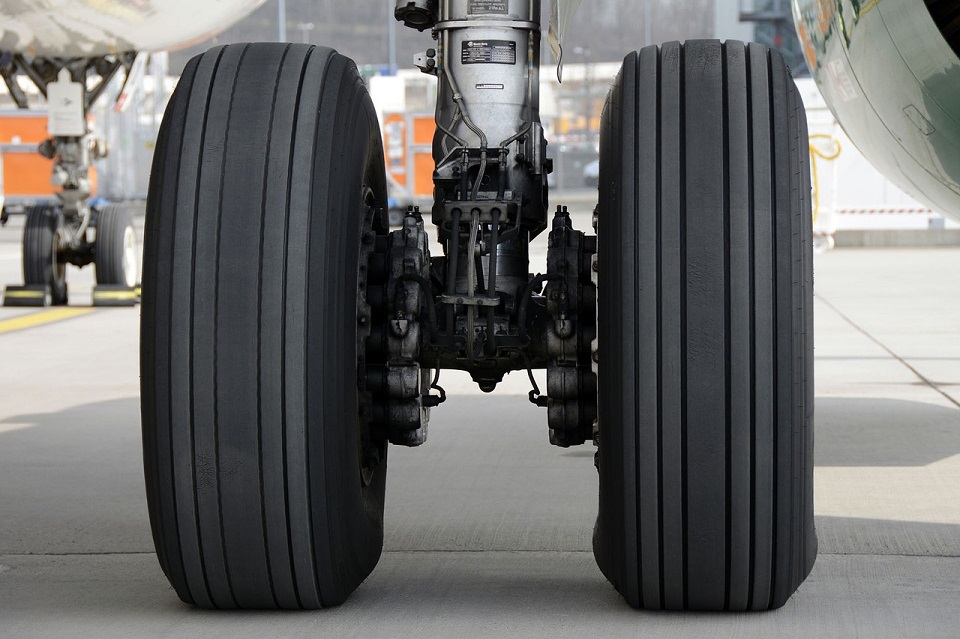
When an aircraft touches down during landing, the appearance of smoke is a common sight. This occurrence arises from a combination of factors related to the landing procedure and the characteristics of the tires themselves.
As the aircraft descends and prepares for touchdown, the tires are stationary. Upon contact with the ground, they rapidly accelerate from a standstill to an average speed of 240 to 260 km/h. This sudden burst of motion creates friction between the tires and the runway surface, resulting in the emission of smoke.
The smoke stems from the considerable heat generated by the friction between the rubber tires and the asphalt runway. This heat is sufficient to cause the rubber to almost vaporize, resembling the smoke produced when a bike tire skids against the road.
Several variables influence the intensity and occurrence of smoke during landings. The frequency of landings a tire experiences within a specific timeframe, such as within 24 hours, impacts its level of wear and tear. Airlines rigorously inspect tire conditions before each flight, promptly replacing them if any damage or signs of deterioration are detected to uphold safety standards.
The design and resilience of aircraft tires are influenced by the type of aircraft and its operational demands. For example, the tires used on an Airbus A330-200 differ in composition and load capacity compared to those designed for conventional automobiles. Furthermore, environmental factors such as runway temperatures and altitude variations contribute to tire performance.
Aircraft tires are meticulously engineered to endure the demanding conditions of takeoff and landing. They incorporate multiple layers of nylon for reinforcement and a wire core to prevent slippage on the rim. Moreover, these tires are filled with nitrogen, offering superior properties compared to conventional compressed air for aviation purposes.

